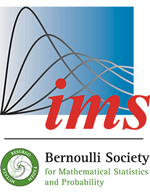Abstract
The Horton laws originated in hydrology with a 1945 paper by Robert E. Horton, and for a long time remained a purely empirical finding. Ubiquitous in hierarchical branching systems, the Horton laws have been rediscovered in many disciplines ranging from geomorphology to genetics to computer science. Attempts to build a mathematical foundation behind the Horton laws during the 1990s revealed their close connection to the operation of pruning – erasing a tree from the leaves down to the root. This survey synthesizes recent results on invariances and self-similarities of tree measures under various forms of pruning. We argue that pruning is an indispensable instrument for describing branching structures and representing a variety of coalescent and annihilation dynamics. The Horton laws appear as a characteristic imprint of self-similarity, which settles some questions prompted by geophysical data.
Citation
Yevgeniy Kovchegov. Ilya Zaliapin. "Random self-similar trees: A mathematical theory of Horton laws." Probab. Surveys 17 1 - 213, 2020. https://doi.org/10.1214/19-PS331
Information





